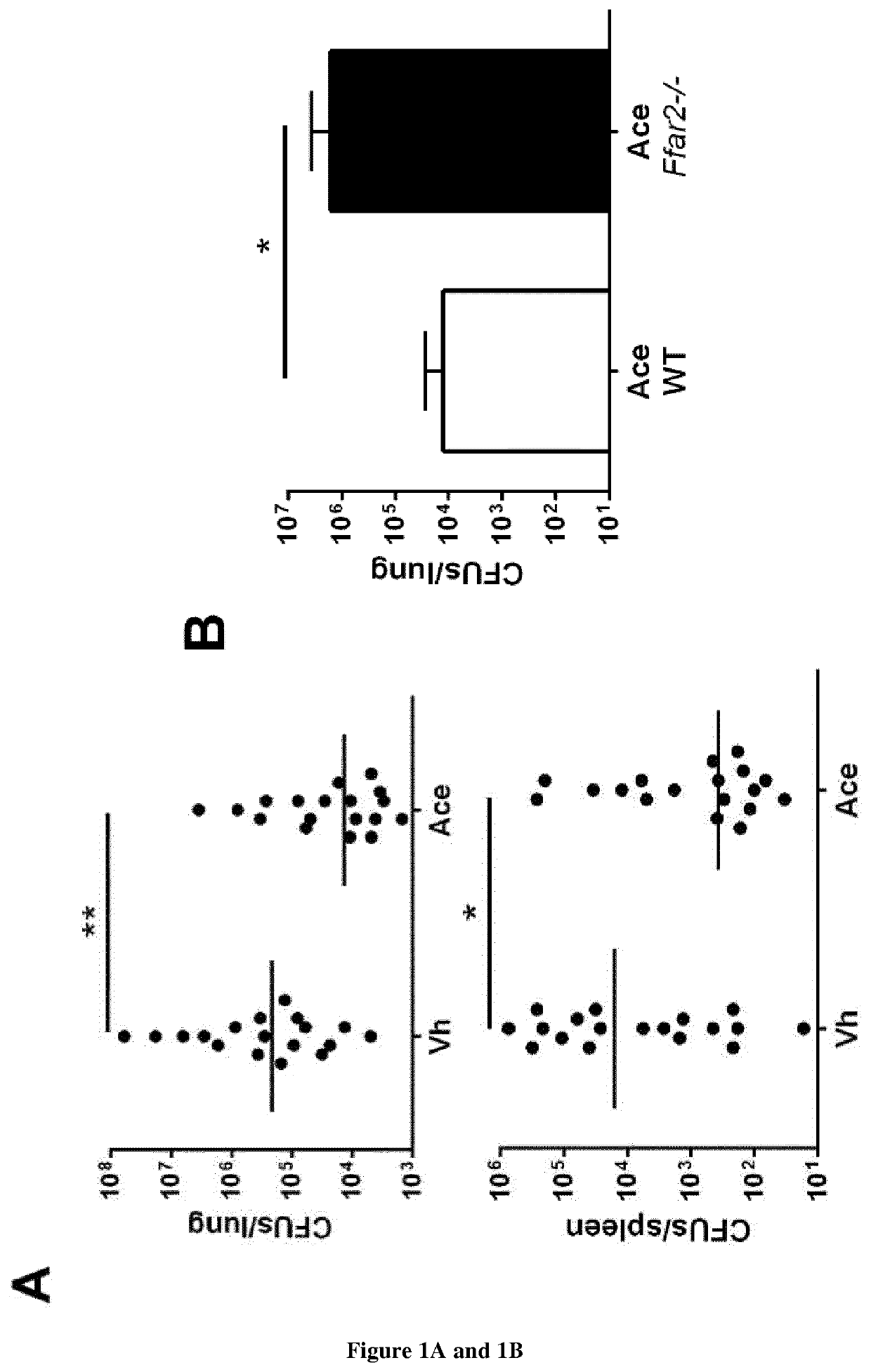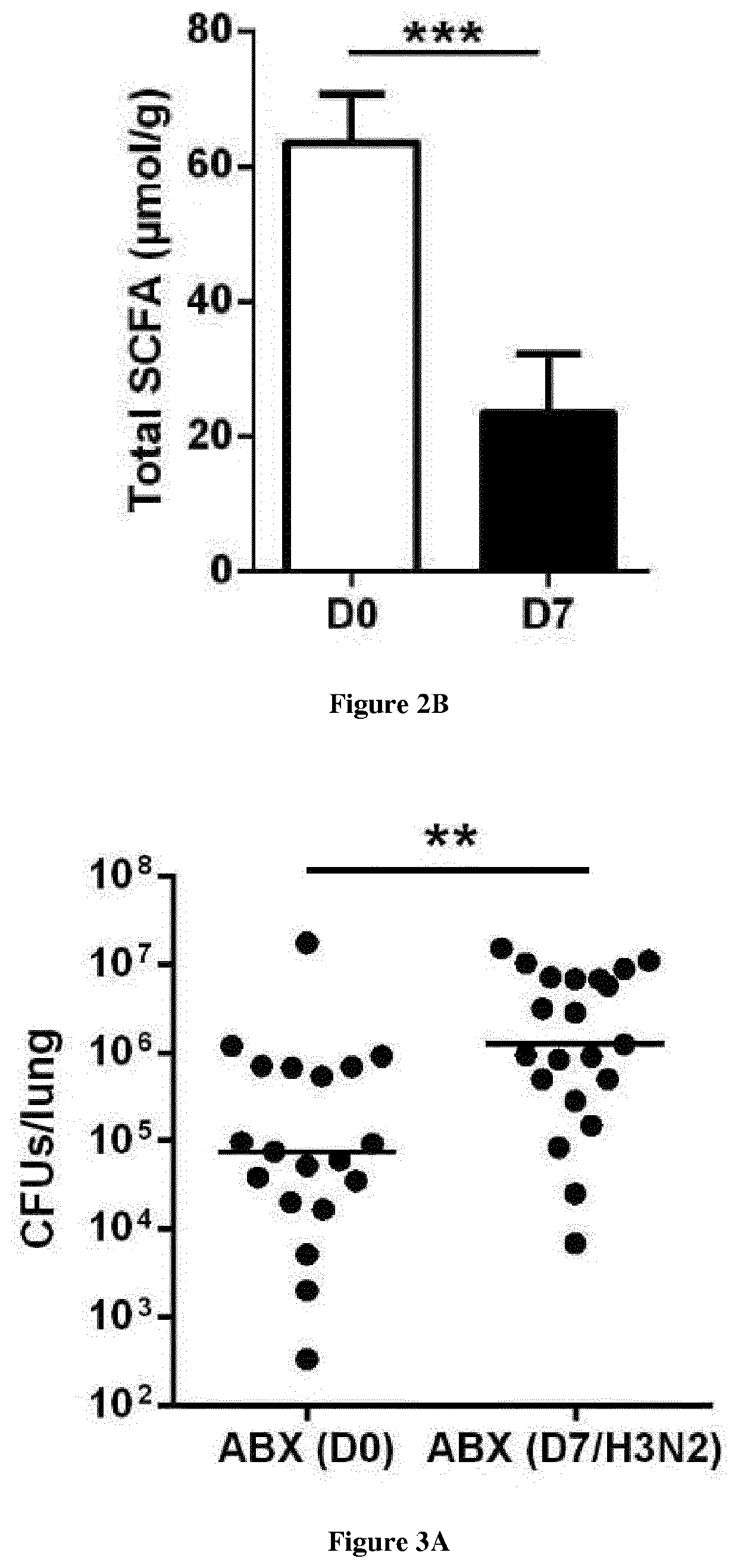Use of short-chain fatty acids for the treatment of bacterial superinfections post-influenza
a technology of bacterial superinfection and short-chain fatty acids, which is applied in the field of methods for treating bacterial superinfection post-influenza, can solve the problems of unexplored role of scfas in host defenses against pulmonary infections, death of 50 million people, and inability to fully investigate the role of scfas in the treatment of bacterial superinfection post-influenza
- Summary
- Abstract
- Description
- Claims
- Application Information
AI Technical Summary
Benefits of technology
Problems solved by technology
Method used
Image
Examples
example
[0044]Methods
[0045]Mice, Ethics Statement and Reagents
[0046]Specific pathogen-free C57BL / 6 mice (6-8 week-old, male) were purchased from Janvier (Le Genest-St-Isle, France). Mice were maintained in a biosafety level 2 facility in the Animal Resource Center at the Lille Pasteur Institute. All animal work conformed to the Lille Pasteur Institute animal care and used ethical guidelines (agreement number AF 16 / 20090 and 00357.03). Antibiotics were from Sigma-Aldrich (St Louis, Mo.) or R&D systems (Minneapolis, Minn.). SCFAs were from Sigma-Aldrich. FFAR2− / − were described in (Maslowski et al., 2009).
[0047]Infections and Assessment of Bacterial Load
[0048]Mice were intranasally (i.n., 50μ1) infected with the high-pathogenicity mouse-adapted H3N2 IAV strain Scotland / 20 / 74 (30 plaque forming units, PFUs), H1N1 IAV strain WSN / 33 (200 PFUs) or H1N1 IAV strain A / California / 04 / 2009) (100 PFUs) (Barthelemy et al., 2016; Barthelemy et al., 2017, Barthelemy et al. 2018). In the case of single bact...
PUM
| Property | Measurement | Unit |
|---|---|---|
| inner diameter | aaaaa | aaaaa |
| acid | aaaaa | aaaaa |
| nutritional composition | aaaaa | aaaaa |
Abstract
Description
Claims
Application Information
 Login to View More
Login to View More - R&D
- Intellectual Property
- Life Sciences
- Materials
- Tech Scout
- Unparalleled Data Quality
- Higher Quality Content
- 60% Fewer Hallucinations
Browse by: Latest US Patents, China's latest patents, Technical Efficacy Thesaurus, Application Domain, Technology Topic, Popular Technical Reports.
© 2025 PatSnap. All rights reserved.Legal|Privacy policy|Modern Slavery Act Transparency Statement|Sitemap|About US| Contact US: help@patsnap.com



